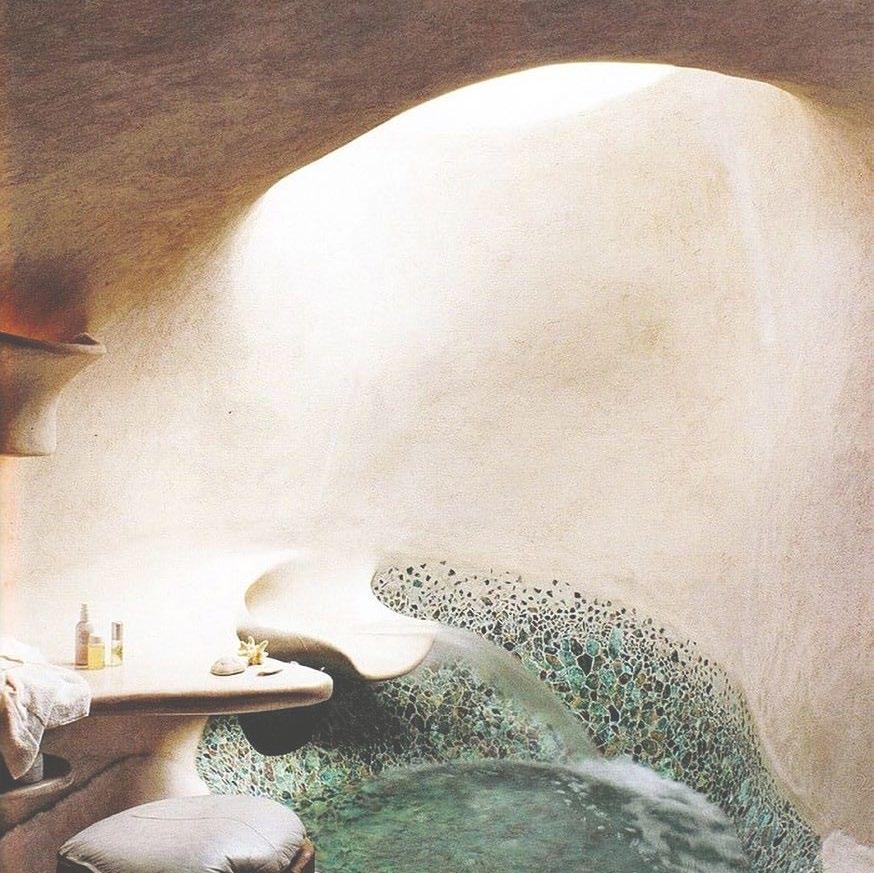
4 minute read
The Organic Architecture of Javier Senosian
from habitology
by hananbegic99
In 1985, after years of researching bio-architecture and free-form design, Mexican architect Javier Senosiain set out to build his first project: a peanutshaped home set partially underground on a grassy hillside. Senosiain’s goal was to create spaces that completely embrace the human body, adapting to its scale and morphology without taking any notice of conventional preconceptions about what a proper house should look like. “The straight line is pretty much absent from nature: everything from microorganisms to the macrocosm, from DNA strands to galaxies, shifts in spirals,” explains the softly-spoken silver-haired 68-year-old. “Before we’re born, we’re floating in our mother’s belly, like astronauts in space or a permanent Jacuzzi, but then we’re pushed into a box, a crib, and we move from one box to another throughout our lives — playpens, bedrooms, square houses — until we die and are put in another box. We make life for children very square, killing off liberty, sponta- neity, and creativity. My designs want to go against this rule of life.”

Advertisement
CASA ORGANICA, 1985 | Naucalpan de Juarez, Mexico




This proposal arose based on the requirements of the elementary functions of man: a space to live together, with room, dining room and kitchen and another to sleep, with dressing room and bathroom. The original concept is defined in two large spaces: one day and one night, looking for the feeling that inside the person will enter the land, that was aware of the uniqueness of this space without losing integration with the exterior green areas.
The Casa Orgánica, overlooks the boxy gray sprawl of Naucalpan, an industrial-residential suburb northwest
of Mexico City. But, in contrast to its surroundings, there’s absolutely nothing gray or boxy about it. It took over four years to build because of limited funding and minor design issues.
The result is a bespoke home that is divided into two zones, one social, the other more private and intimate. Outside, the building is covered in grass to form a rolling lawn that dips and dives like a landscape from the Teletubbies. As the round hobbit front door swings open, a narrow, white, carpet-lined corridor appears, which winds down to a series of wide and open multifunctional spaces.
Dotted with plastic skylights, cave-like lounge areas, and Flintstone-style gadgets, laundry-chute burrows, and waterfall sinks and showers, the interior is inviting, dizzying, and animalistic.
Senosiain takes his cues from obvious organic-architecture references like Gaudí, Hundertwasser, and Frank Lloyd Wright, but is also heavily influenced by local experimental Modernists such as Félix Candela or Juan O’Gorman, whose neo-Aztec phase involved a radical shift from the rationalist projects to the outlandish pre-Columbian organic style of his 1956 studio house, which he built in Mexico City’s Jardines del Pedregal de
San Ángel. Surprisingly, Senosiain also credits Luis Barragán as an inspiration. “Most people don’t see the connection to Barragán,” he consents, “but I had the good fortune to know him, and to visit his house and talk with him a number of times, and I believe there are many connections with his work — the enormous influence of nature, color, and craft. Also, the heavy volumes that are so important in vernacular Mexican architecture are very present.”
Moreover, Senosiain’s home, just like Barragán’s own house and studio, represents a live-in model, a space that reflects the architect’s thought processes


and principles, his trials and errors. It’s a design philosophy and also a constant work in progress. Senosiain explains, “When we bought the land, the relationship with the context for me was tricky. But I figured that originally this site was green fields, so we tried to adapt to that original context. I am into this idea of organic architecture, it’s a process that has to be enjoyable.”
Senosiain also values the emotional effect of moving from narrow, dark spaces to broad, open, illuminated ones. “Barragán always said that excessive light can be blinding, that animals are always looking for semi-darkness... In nature we see spaces like the bird’s nest where the male bird fetches materials and the female bird adapts them to her needs with her body. Rabbits, ants, and moles also create their burrows with their bodies, fabricate their home as a shell, with their secretions and excrements.”
“Nowadays people are more aware of the environment, and the negative impact we’ve had on it. When I built this house people saw it as a wacky idea, but today I think people understand it better. The ideas of microclimates and natural insulation are better understood. Most of my clients are artists, bohemians, or nature buffs,” he proudly recounts. With a dozen projects completed over the past three decades, and teaching at the Universidad Nacional Autónoma de México, has an expert perspective on the evolution of environmental design.
the bio-architecture issue


